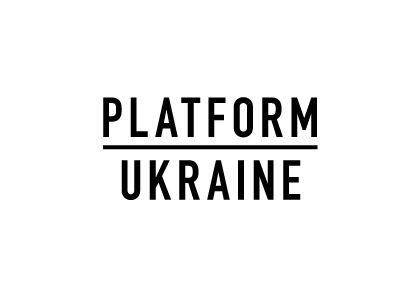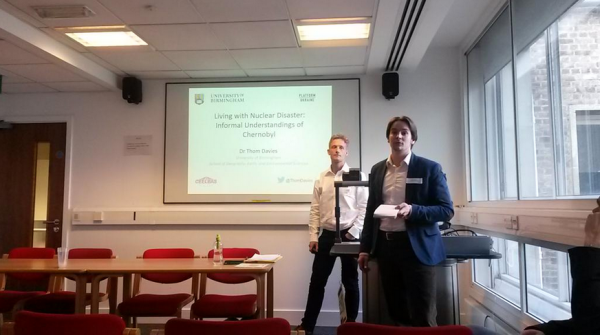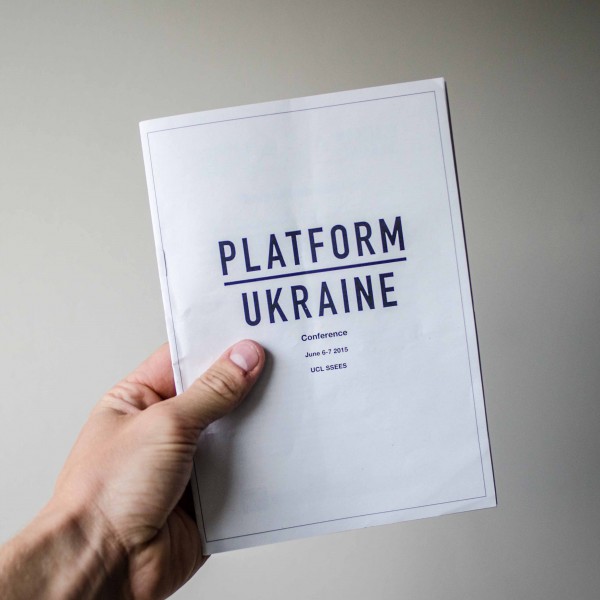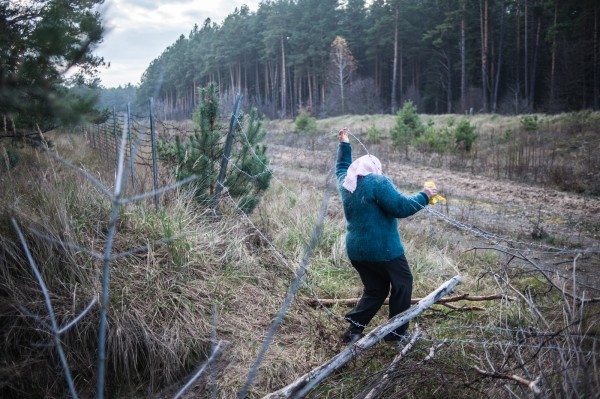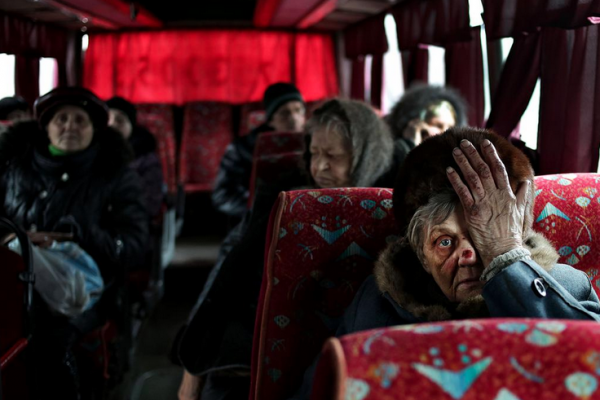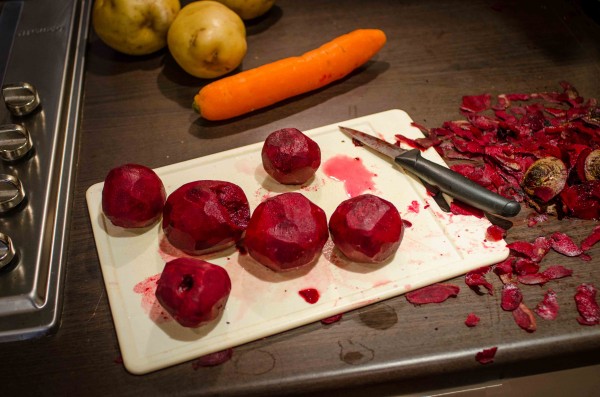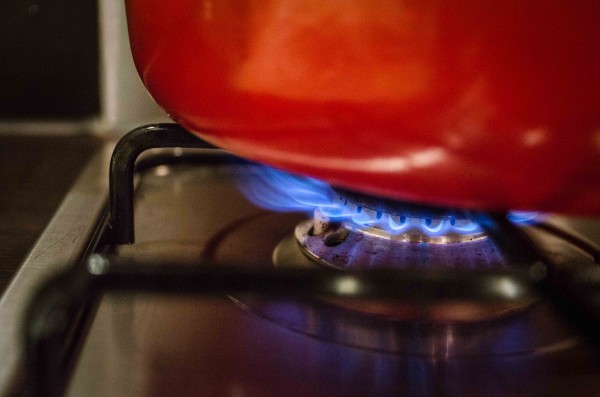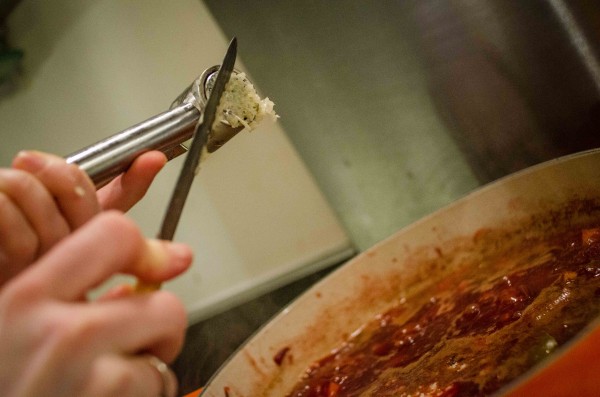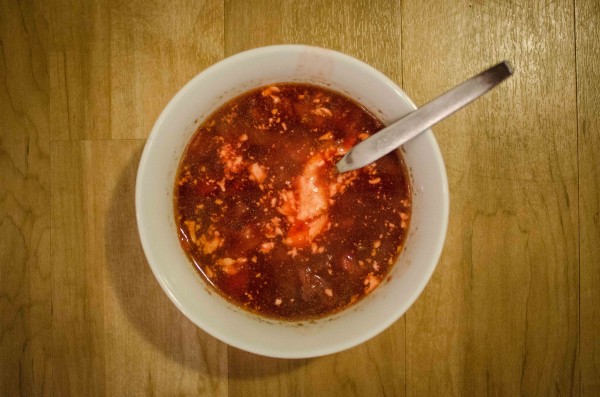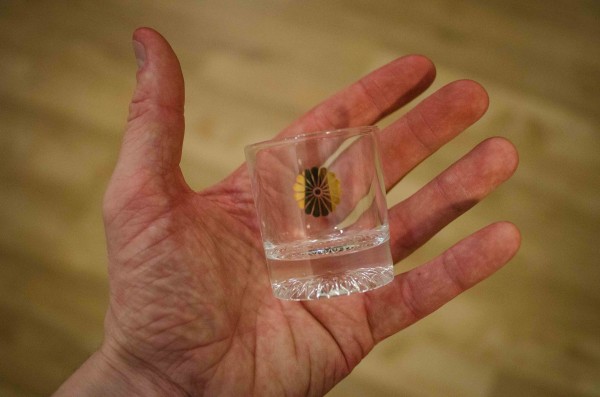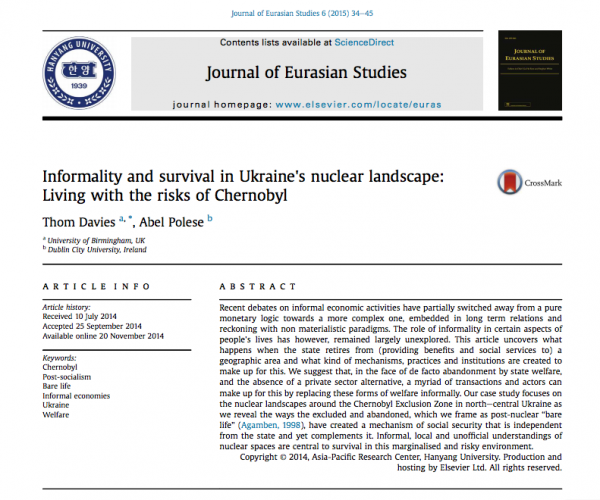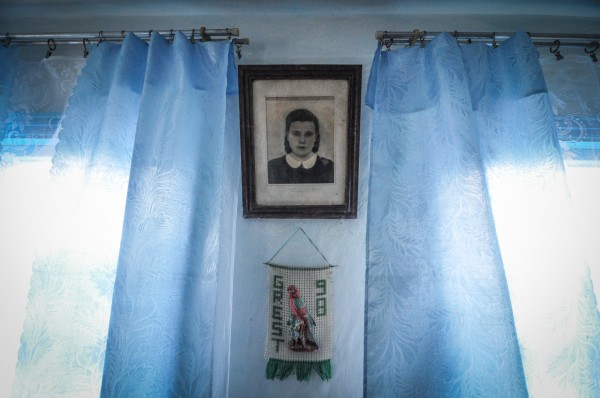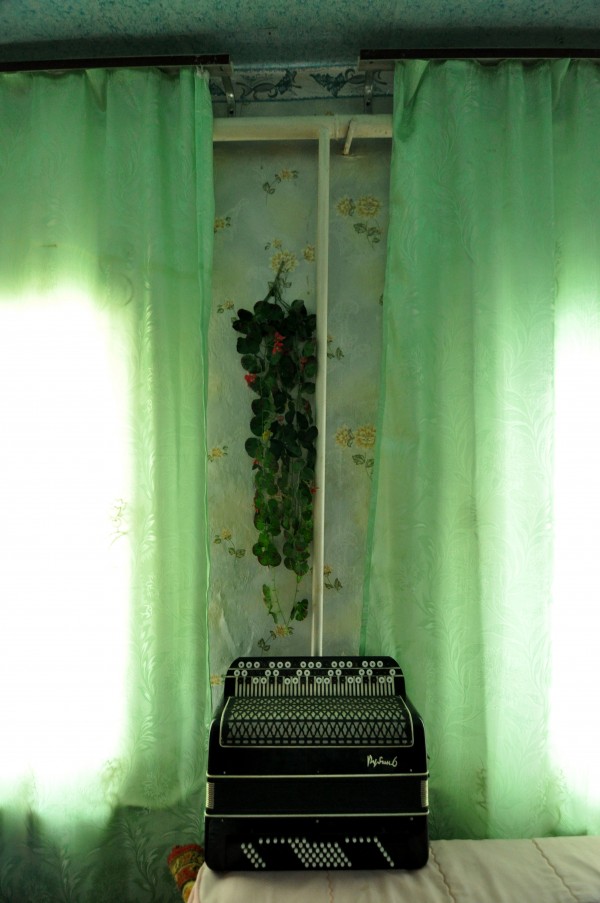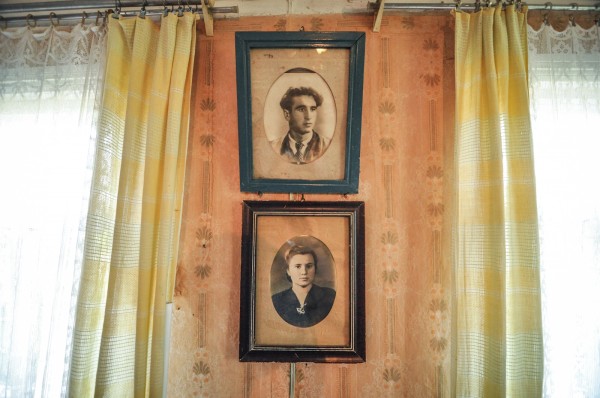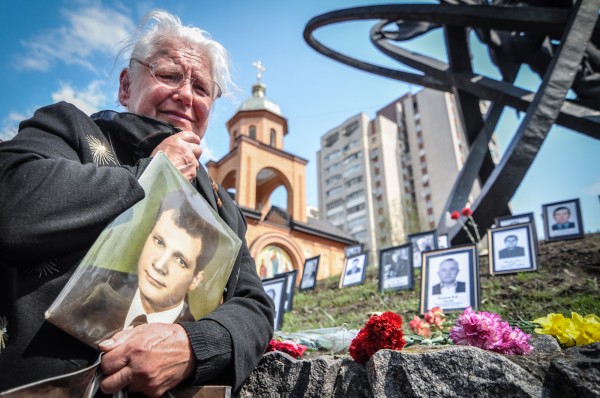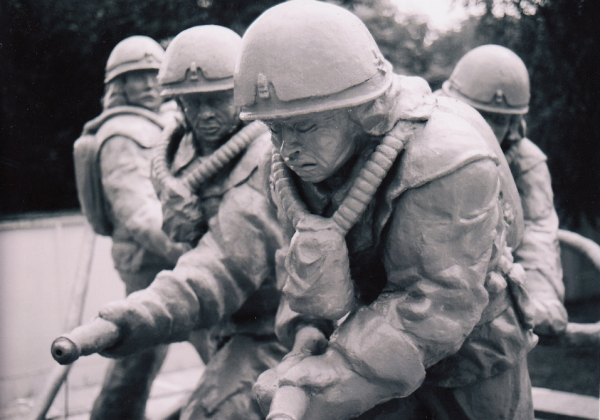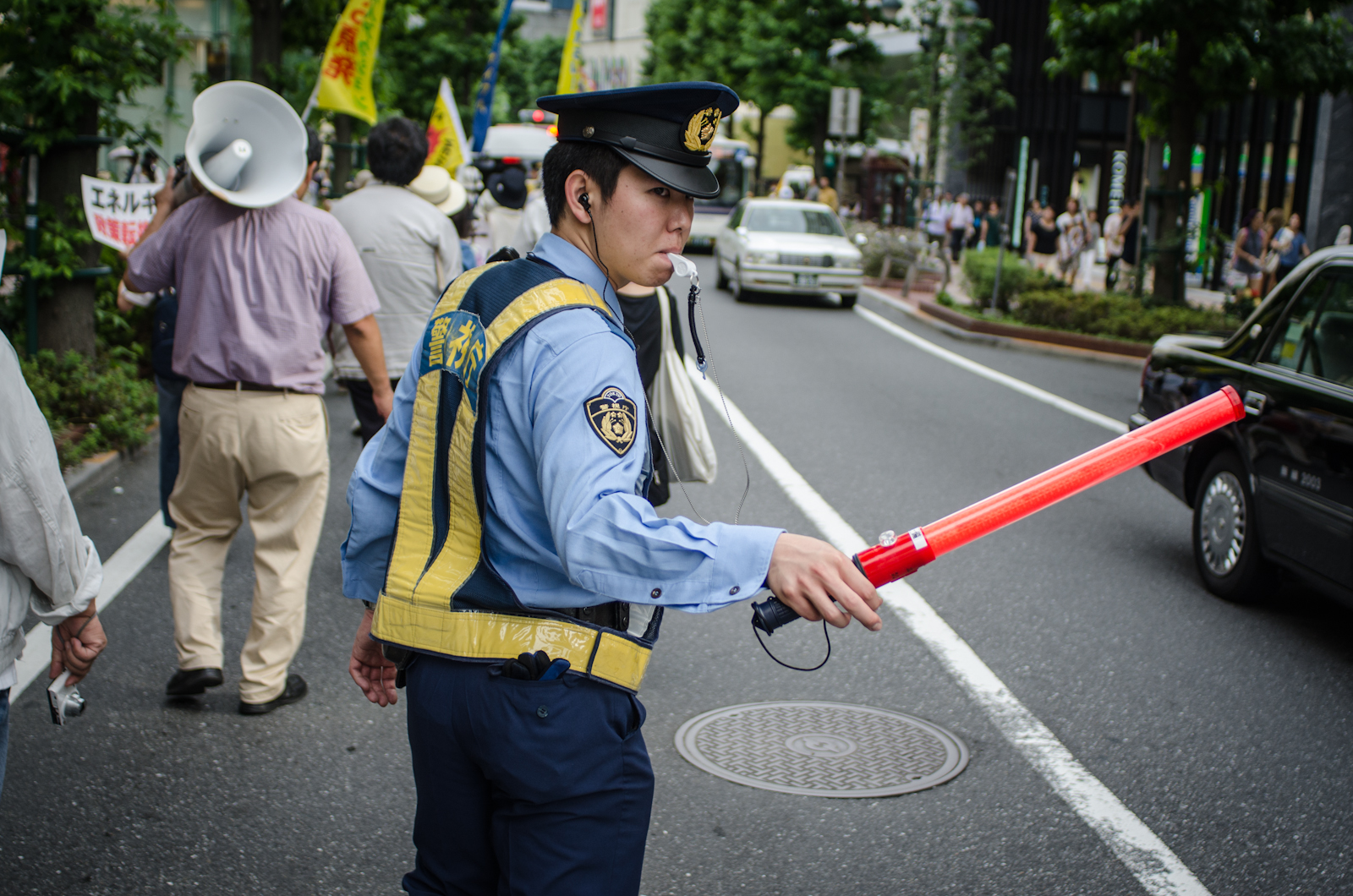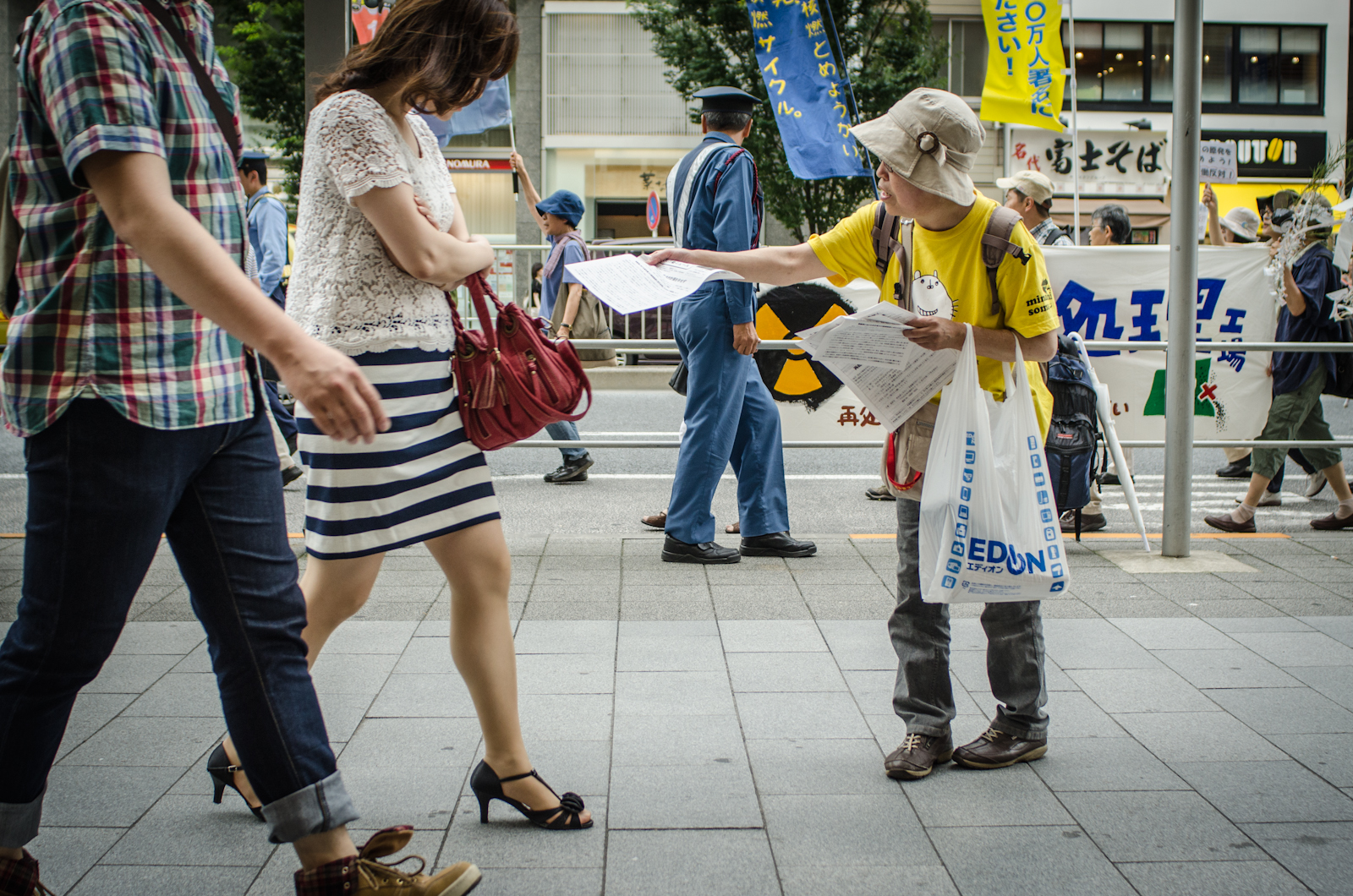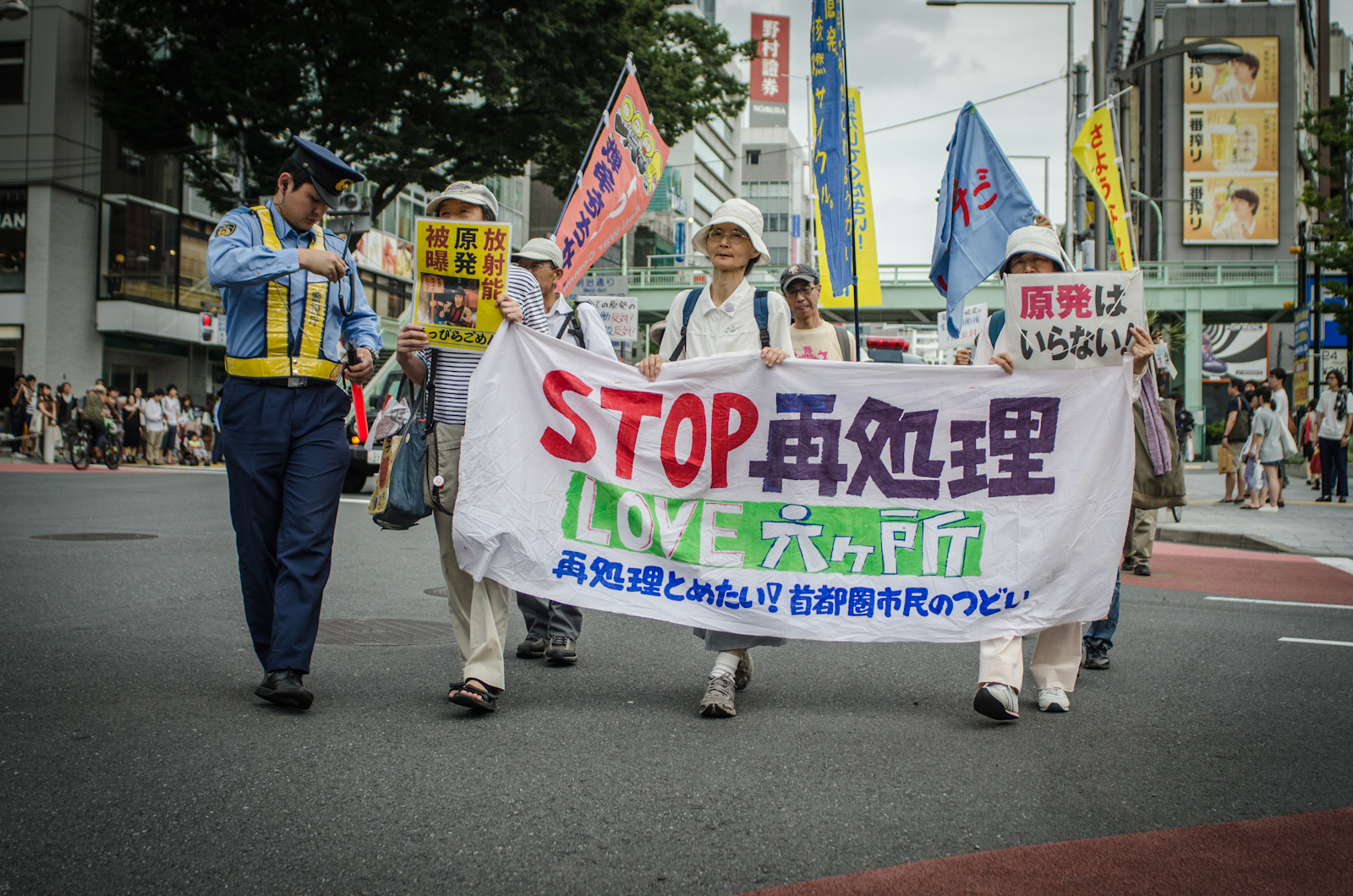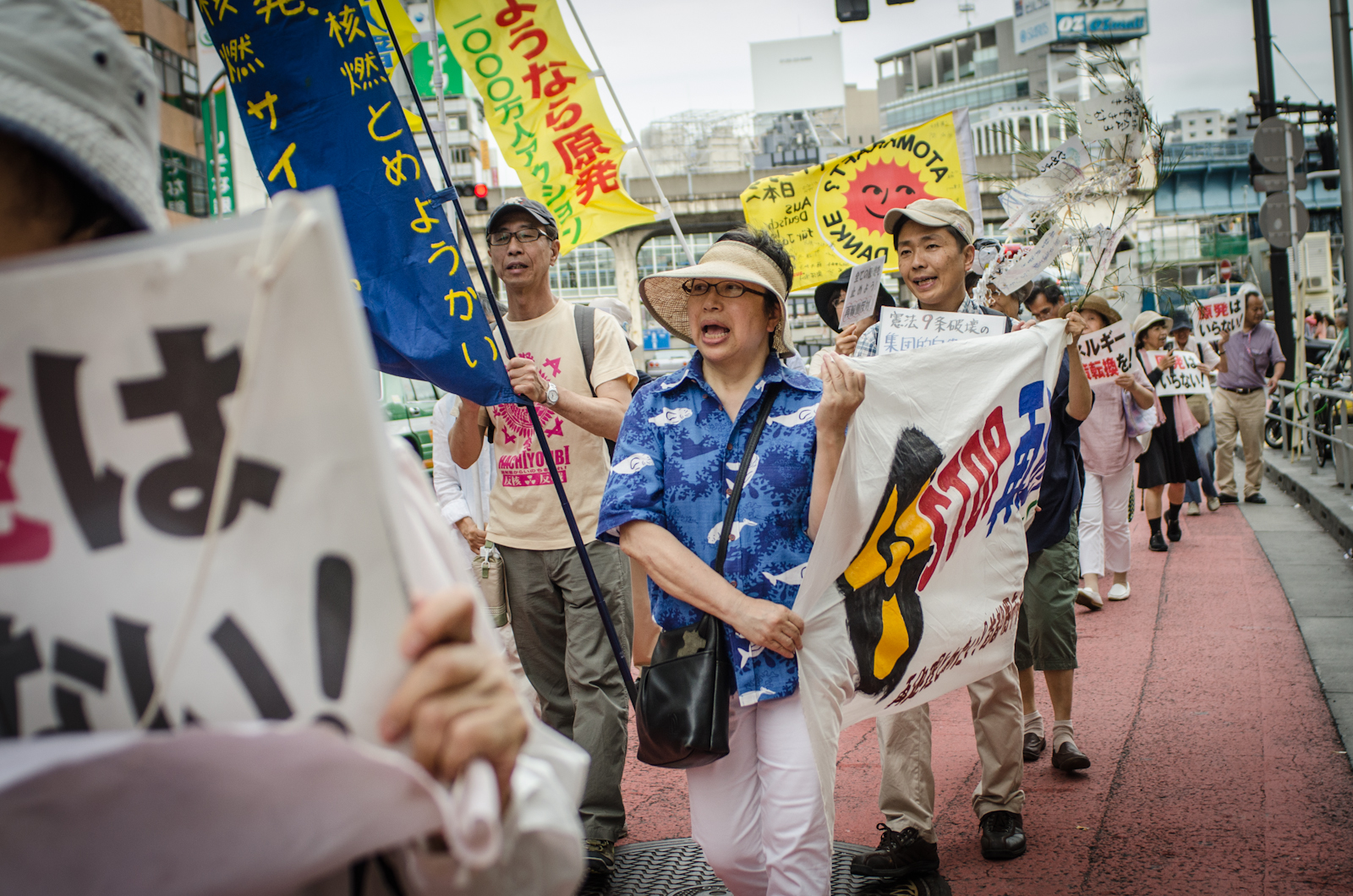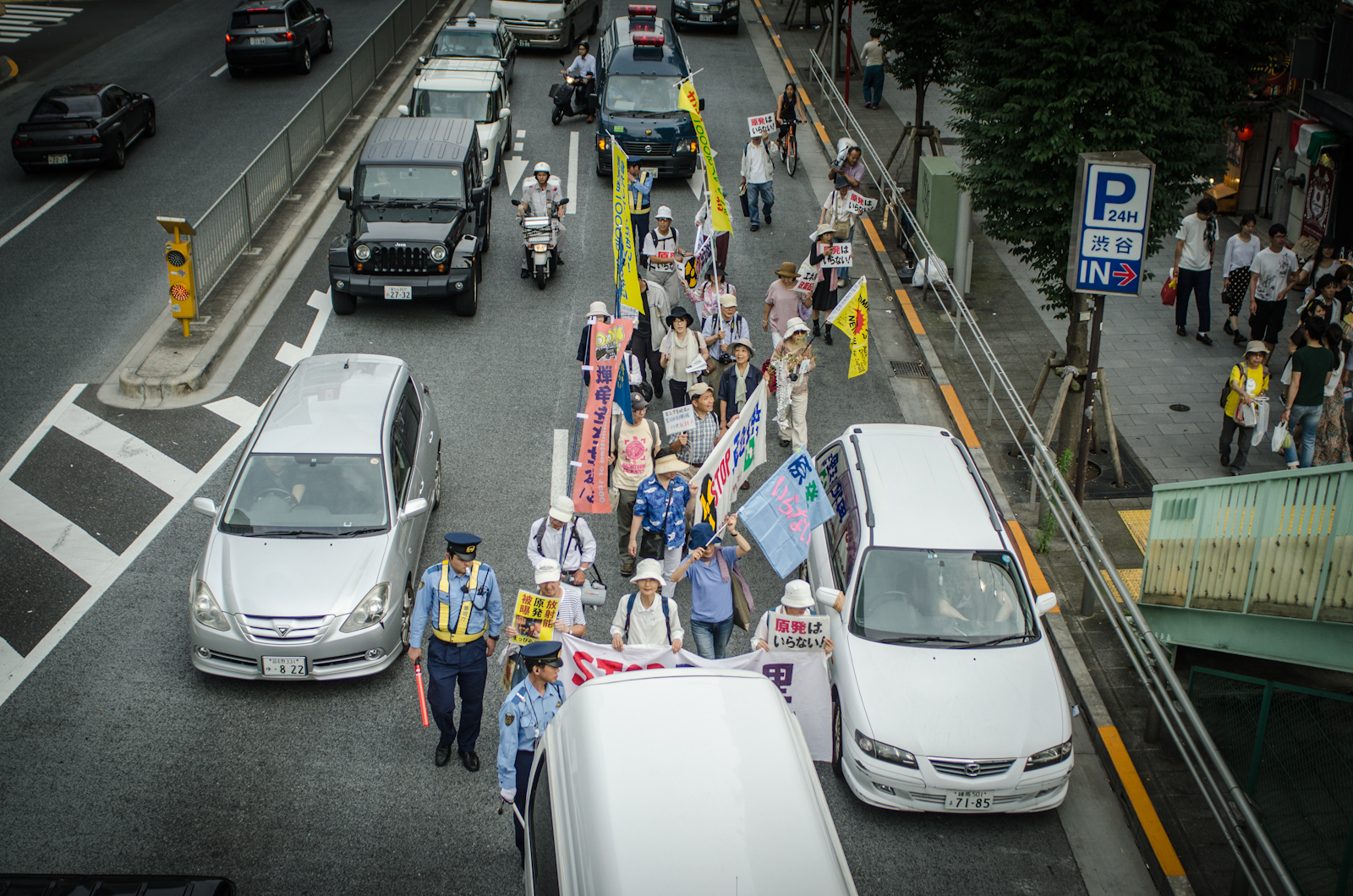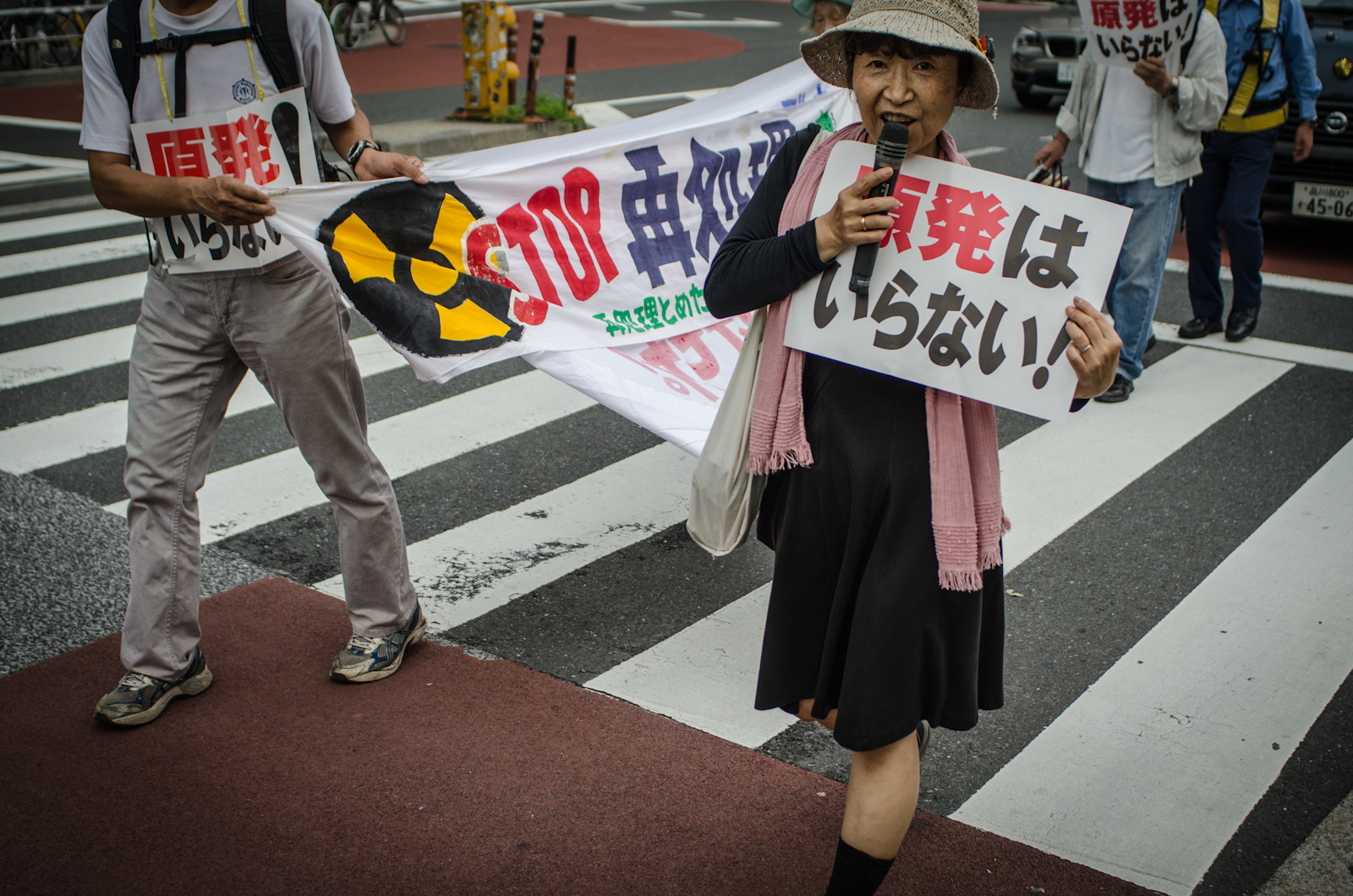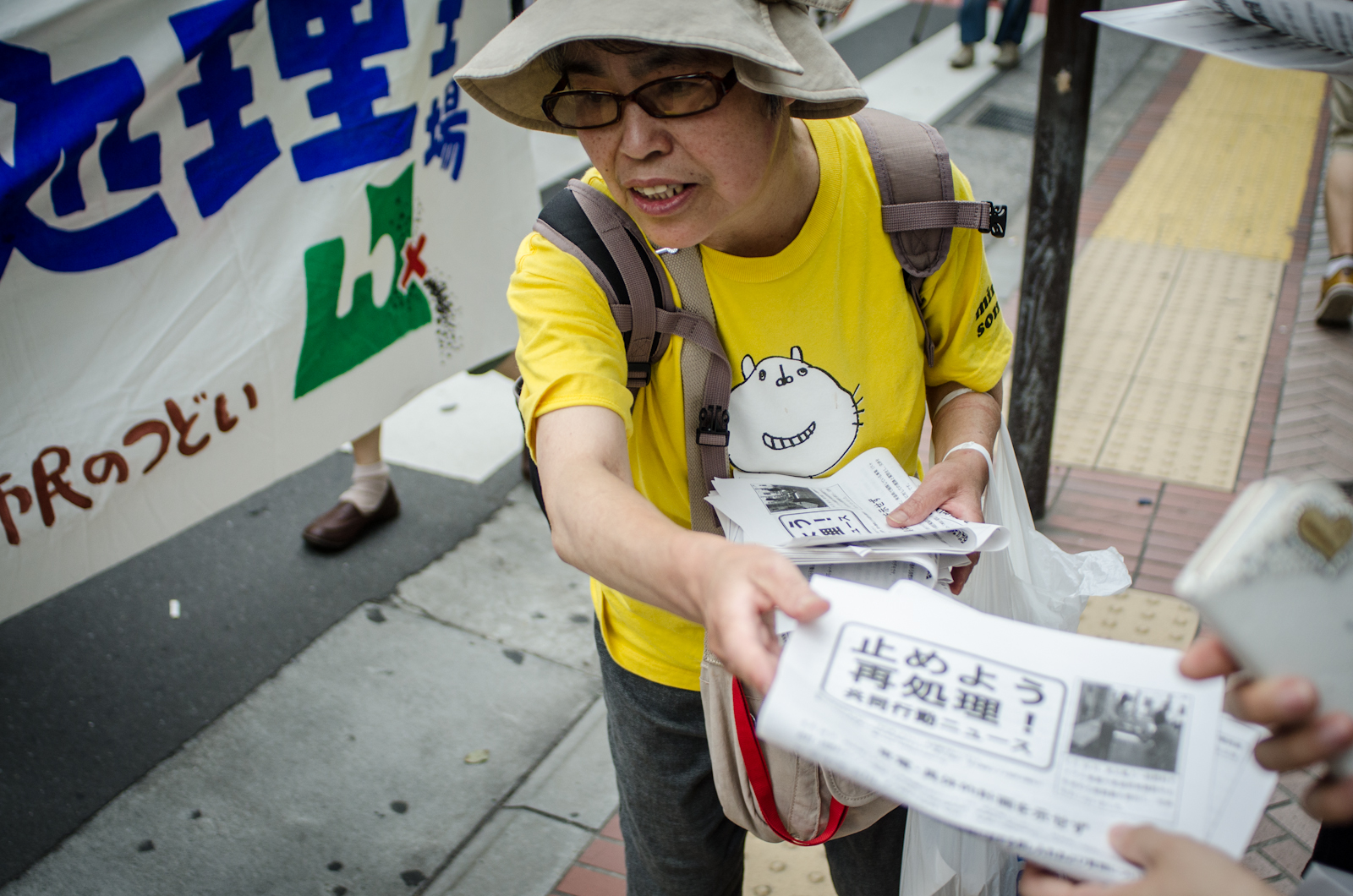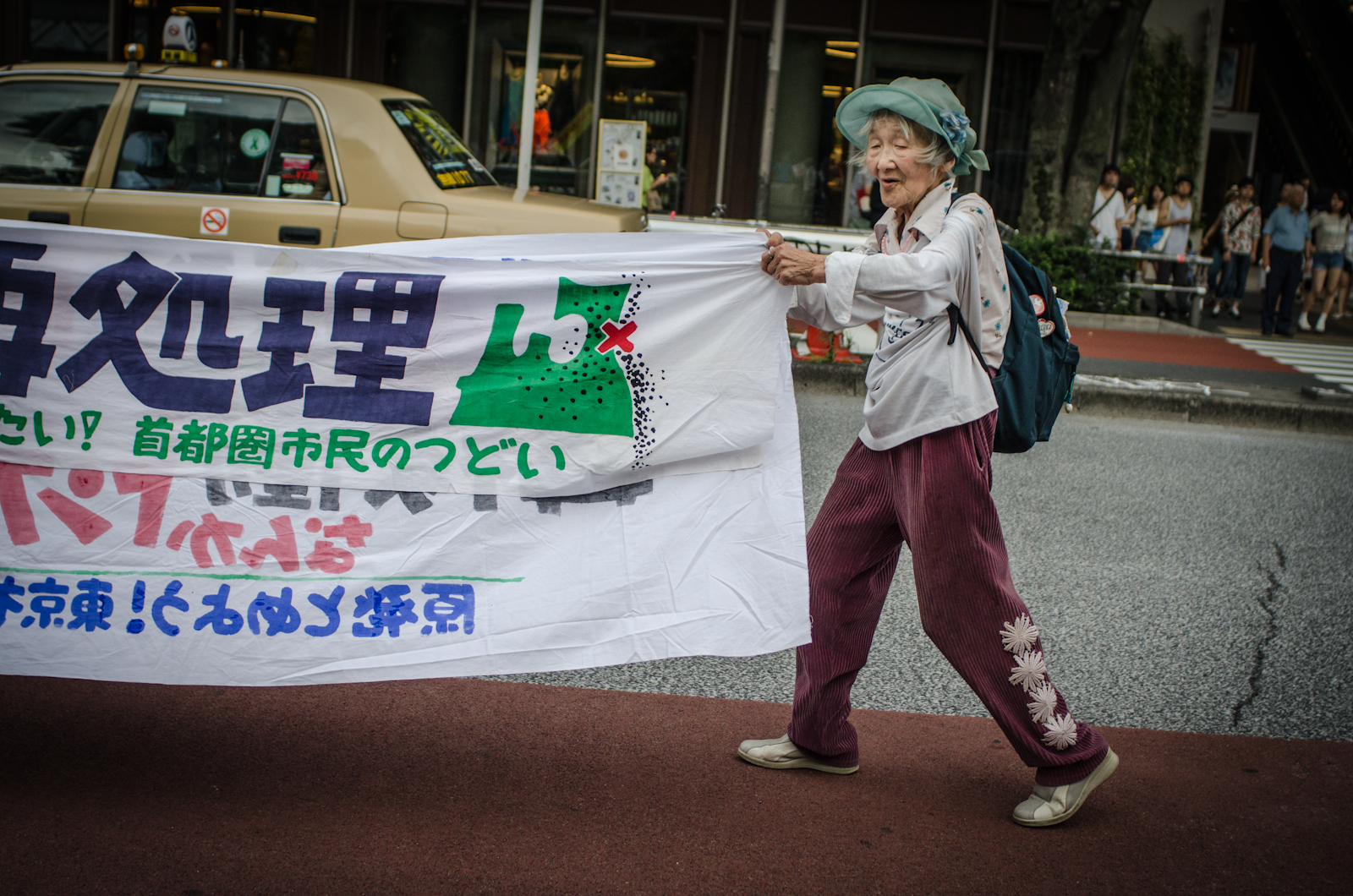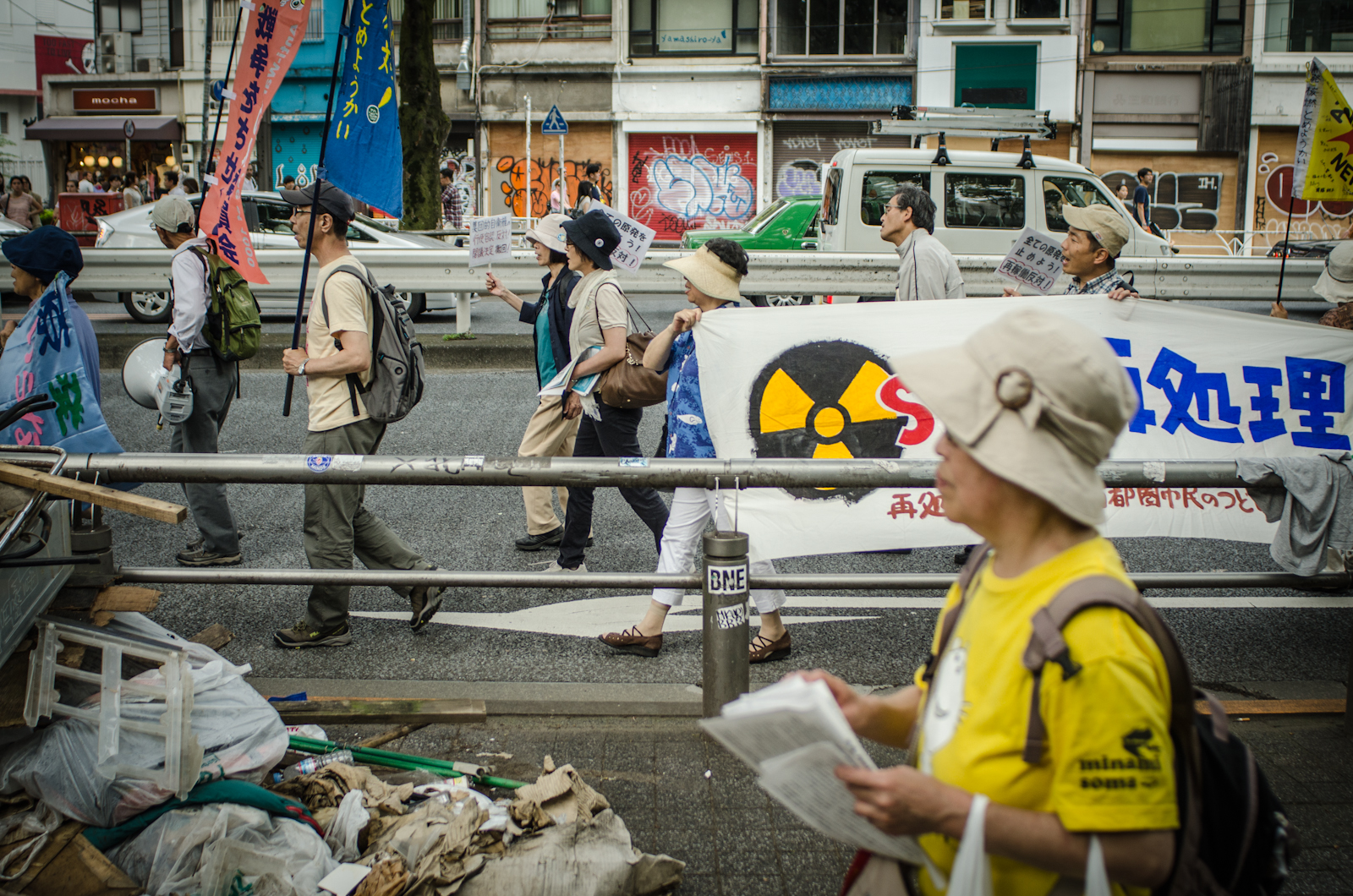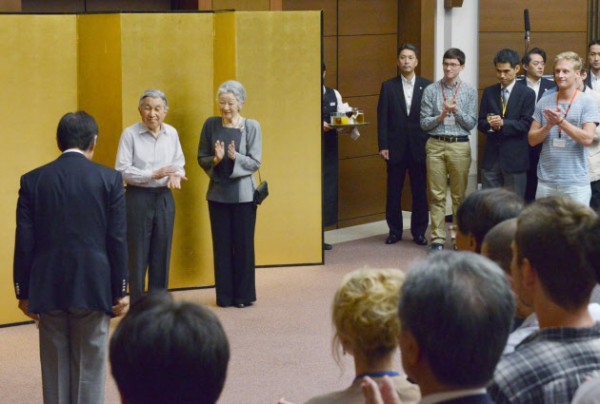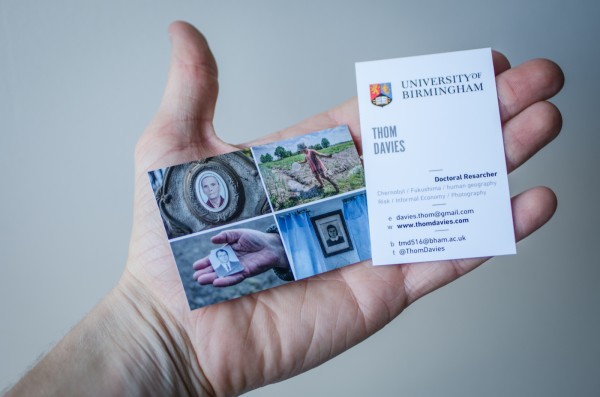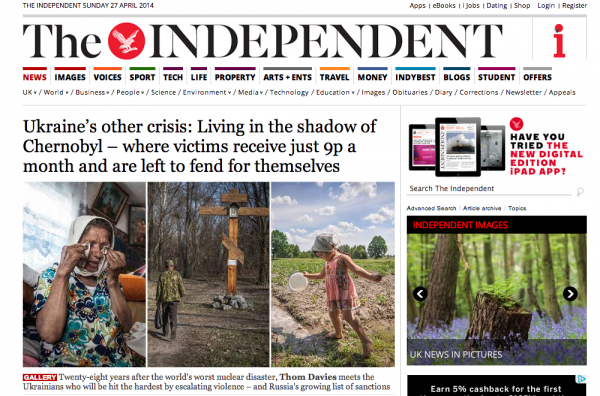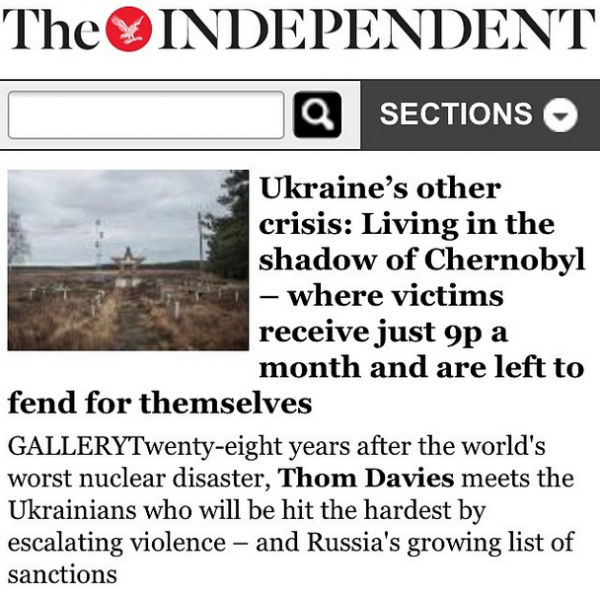I was invited to present my PhD research about Chernobyl at UCL last June with Platform Ukraine, a multidisciplinary network set up in response to the recent tumultuous events in Ukraine and Eastern Europe. Platform Ukraine is based at the School of Slavonic and Eastern European Studies (SSEES).
The conference shone a timely light on many aspects of the post-Euromaidan situation in Ukraine, as well as providing an opportunity to exchange ideas on boarder issues and challenges in Post-Socialist space.
I was on a panel focusing on Chernobyl and was talking alongside Dr Paul Dorfman from UCL and Professor Jim Smith from the University of Portsmouth. Chaired by Mateusz Zatonski from London School of Hygiene and Tropical Medicine, the session lead to an interesting discussion about the role of nuclear power in contemporary society. Paul and Jim both gave excellent talks from a more scientific (with a capital ‘S’) perspective than my own ethnographic insights, which made for an interesting confluence of ideas.
My presentation was titled ‘Living with Nuclear disaster: Informal Understandings of Chernobyl‘.
Abstract:
"Drawing upon extensive qualitative research and visual methods with communities who live around the Exclusion Zone in Ukraine, this paper will discuss the ‘lived experience’ of nuclear disaster (de Certeau 1984). It will reveal the coping tactics and informal understandings of post-atomic space that allow marginalised groups to inhabit and renegotiate this stigmatised landscape. The paper argues that alongside the half-lives, Exclusion Zones and official measurements of nuclear risk, exists an informal geography of Chernobyl. Local alternative understandings of Chernobyl, which are often at odds with the formalised spatialisations of the Zone, allow people to negotiate the twin ‘exposures’ of nuclear radiation and de facto state abandonment. Informal economic activities such as border crossing, mushroom picking, and scrap metal collection blur the boundaries of the Zone and contest the official governance of Chernobyl (Davies & Polese 2015). This long-term research has involved participant observation, participatory visual methods, and semi-structured interviews with evacuees, liquidators, border guards, ‘Chernobyl widows’, farmers and returnees who inhabit and contest the nuclear borders of the Chernobyl Exclusion Zone."
Being part of Platform Ukraine was a excellent experience and I look forward to more involvement in the future.
You can check out their blog and follow Platform Ukraine on twitter here.
I use photography as part of my research practice, both to gain access to hidden spaces and communities, and to illustrate and communicate my ethnographic data once no longer in ‘the field’.
One of my photographs from my Chernobyl research was selected for the Images of Research exhibition at the Birmingham Museum and Art Gallery. It shows one of the informal activities I witnessed and researched near the Chernobyl Exclusion Zone in Ukraine.
A woman crosses the barbed wire fence into the contaminated nuclear Zone. Beyond her a track used by border guards to monitor and prevent trespassers runs parallel to the fence, and beyond that the contaminated forest of the Zone:
Many people informally enter the Exclusion Zone to collect scrap metal to sell on the black market, or to gather wild foods such as berries, mushrooms, and wild game to eat and sell. I spent long time learning from people who contest the official borders of the Zone, using a research method known as participant observation. Through participatory visual methods (which you can read about here) and many interviews with people who live near Chernobyl, I learnt about their alternative understandings of radiation risk and their complex relationship with place. You can read more about my academic research into the human geography of Chernobyl in these two papers:
Informality and Survival in Ukraine’s Nuclear Landscape: Living with the Risks of Chernobyl by Davies & Polese (2015)
A Visual Geography of Chernobyl: Double Exposure by Davies (2013)
Here is a quote from my research that relates to the image above:
"We know there is radiation there, and police say 'Don't go there, there is radiation'. On the fence there is a sign that says there is radiation: 'Don't go in, there is radiation'. But we go...Blueberries, blackberries..."* * *
The Images of Research exhibition is free to view at the Birmingham Museum and Art Gallery from 16th-22nd March 2015.
# Chernobyl, exhibition, gallery, Images of research, participant observation, photography, visual methods
0 0
Midway through February I had my first taste of normality since last year: a day off! Feels amazing. The final death throes of thesis writing have been incredibly focused and stressful, so it was really wonderful to not be staring at a computer screen writing about Chernobyl. I’m fascinated by the nuclear disaster, but its good to come up for air.
Writing about Ukraine while in the UK, along with seeing the conveyor belt of media coverage that Ukraine has experienced, has made me feel nostalgic for Eastern Europe. The geographer Cindi Katz reminds us that there’s little distinction between the place of ‘fieldwork’ (for me, Ukraine) and the geographically separate yet emotionally connected spaces of writing. In the age of social media especially, the borders between ‘the field’ and home have become comprehensively blurred.
Since I left Ukraine in late 2013 – days before the Euromaidan revolution – the borders of Ukraine have been permanently changed, and I have been constantly reminded of the place I grew to know. Ukraine ‘experts’ have crawled out of the woodwork, and many photographers have cast their lens on a country that for so long was overshadowed by its larger neighbor to the East. This visual narrative of post-revolution Ukraine has remained unsurpassed, in my opinion, by Anastasia Taylor-Lind’s fantastic project ‘Portraits from the Black Square’ (made with assistance from Emine Ziyatdinova), but times have moved on, and homegrown photographers especially are making incredible images that cast our imaginations towards a once sidelined country. For example my friend Anastasia Vlasova’s striking portrait from earlier this month of the evacuation of the encircled town of Debaltseve.
I will write a more substantive blog post after I submit my thesis on the contemporary visual landscape of Ukraine. Its worth viewing Chris Nunn’s work for example, which has been a pleasure to see evolve.
For the last year I’ve been exposed to the everyday reality of thesis writing (not fun), where thinking about Ukraine has in some senses been a job. Doing this against a backdrop of the visual barrage of Ukraine-focused coverage has brought its own challenges.
Today I saw Oksana Yushko’s thought provoking project about love between Ukrianian and Russian couples, featured in the New York Times. The way it addresses the current conflict in Ukraine, avoiding the tired clichés of camouflage clad soldiers and frontline bravado was a breath of fresh air. It reminded me that not only photographers but also academics need to rise to the challenge of articulating Ukraine differently. It reminded me also that now, more than ever on this first ‘day off’, I feel a longing to reconnect with my own experiences in Ukraine. My experiences, which spread over several years, were characterized just as must by the mundanity of everyday life, as by the adventures and scrapes I had while in Chernobyl. Oksana (with assistance from husband Arthur Bondar) captures something of this prosaic normalcy that characterizes most of life in Ukraine (as elsewhere), and is perhaps understandably missing from Ukraine’s post-revolution visual narrative; Alla and Sergey’s family relaxing in their lounge; Tatiyana and Sergei hanging washing on the line; Dima and Vlada sitting by the stove in their kitchen:
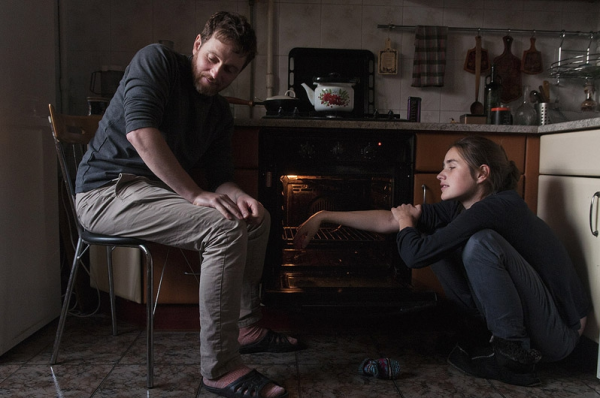
Photograph by Oksana Yushko © from her ongoing project ‘Familia‘
Making Borscht
My time in Ukraine was often centred around people, connections, laughter, and food. On my day off I wanted to make something that would remind me of Ukraine. And like Oksana Yushko’s project that photographs couples from both sides of the Ukraine-Russia border, I went for a dish that is synonymous with both these Slavic countries: Borscht.
Having been served this delicious soup countless times in Ukraine yet paid shamefully little attention to how it is actually made, I looked to this Guardian article for a recipe, and was really pleased with the results (I doubled the below ingredients to serve eight people). Its also a red soup, so its an ideal dish (very tenuously!) for Valentine’s day…
Given the cultural importance of this dish in Ukraine (and Russia), I wouldn’t be surprised if it has inspired academic attention from anthropologists and the like, much like Nancy Ries focusses on the potato to talk about post-Soviet survival in Russia. But I digress.
Ingredients:
-
300g beetroot, peeled
50g butter
1 small onion, 1 small carrot, 1 stick of celery, 1 small leek, all peeled where necessary and cut into small dice or rings
2 grains allspice
½ bay leaf
1.5l gelatinous beef stock
2 medium floury potatoes, eg Maris Piper, peeled and cut into small dice
½ small cabbage, shredded
4 cloves garlic, peeled and crushed
2 tbsp cider vinegar
1 tsp sugar
½ tsp ground black pepper
Sour cream and fresh dill, to serve
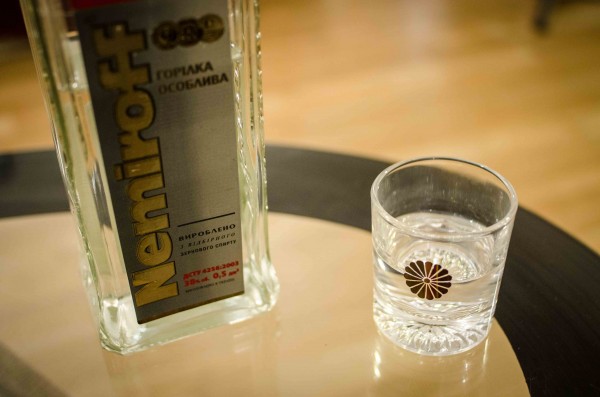
Full the full ‘imagined geography’ experience, why not one or two glasses of Ukrainian vodka?
The borscht tasted delicious and reminded me of Ukraine, which I guess was the whole point. When I finish the PhD and start writing papers about my Fukushima research I think I will have to learn how to cook Ramen. But until then, I’m going to eat another bowl of borscht – its back to the thesis tomorrow.
I have just published an academic article about Chernobyl in the Journal of Eurasian Studies. You can view the paper here.
I have been working on the ideas in this paper for some years, first sketching some initial thoughts while sitting in a flat in north Kyiv, Ukraine. The view from the balcony of that apartment can be seen in a ‘lomo’ panorama photograph below. It’s nice to see these ideas put through the academic grinding mill of peer review and finally end up in a paper.
Being new to academia I am still amazed how it takes so long to publish an academic article. And I don’t just mean the final stages of publication like dealing with the editor’s final comments, reformatting citation bibliographies and re-checking ‘uncorrected proofs’. I mean the whole thing: collecting the data; making sense of it; sketching out ideas; drafting; re-drafting and writing the damn thing; sending it off for peer review; and then the long months of waiting before the inevitable and sometimes frustrating reviewers’ comments.
I’m sure the whole process gets quicker with experience, but nevertheless, when I think back to the first drafts of my academic outputs it seems an age ago.
Academic Capital?
Academics don’t get paid to publish, in a direct way at least. That kind of encouragement would be superfluous. They’re like amateur photographers or part time models: promised ‘exposure’ in exchange for free work. Instead their publications become notches on their academic bedposts, to be spun out on loquacious CVs and dropped into departmental conversation. Perhaps these notches will be read by other academics, and cited in their publications. The more citations the better! And perhaps they could use these highly cited papers to get a promotion, secure research funding, or move to a more prestigious department.
Like any business, academia is an incredibly competitive industry. This explains why publishers don’t need to pay academics to write articles, even ones that take years to create. Academics are chomping at the bit – they need to publish, they have to: ‘Publish or perish‘ goes the saying, and its true. Papers are academic capital.
And so, in a tentative step towards joining in, I’ve published another article.
Thom was paid in no way for publishing this blog post.
(You can view my very modest academic contributions here.)
On words and photography:
Putting words with photographs, especially quotations from interviews, can often change the meaning of an image. I was reminded of this recently when I visited the Photographer’s Gallery in London to see an exhibition about early Russian colour photography (reviewed by Lewis Bush here). Not least due to my ignorance of Russian photographic history, it was not until I read the captions, titles and image-descriptions that the photographs made sense; words changed their meanings.
I have hundreds of hours of recorded interviews with people who live near Chernobyl in Ukraine. They sit transcribed on my laptop, slowly working their way into my PhD thesis. I have started working on a small project called Chernobyl Interiors that matches some of these quotations with photographs I made in the intimate spaces of the participants’ houses around the Exclusion Zone.
So often Chernobyl is portrayed photographically as an abandoned, ‘dead’ and decaying place, but it is a landscape that people live with. It is home to many people who dwell in the shadow of uncertainty and nuclear pollution, but also by people who laugh, cry, fall in love and live lives that we would all recognise.
The photographs, like the one above are nothing special; they are rather banal interior shots of the homes I was invited into. But put next to quotations from people who live in these houses and they are transformed – perhaps even seen differently:
“My son was 23 and the other was 24
when they died. It was radiation from
Chernobyl.
I used to sing and play the accordion in
the local house of culture, but now
that my children are dead I don’t sing
anymore”
I remember this interview very well, a sad story of suffering and loss that was far from unique in this nuclear landscape. Though the quotation above gives no more than a ‘snapshot’ into this mother’s wider story, it also gives the photograph a new significance, and perhaps provides a deeper way of narrating the ongoing story of Chernobyl.
Susan Sontag – one of the more prominent scholars of photography – said:
“Photographs – and quotations – seem, because they are taken to be pieces of reality, more authentic than extended literary narratives”
There is an advantage of only seeing (or reading) a snapshot of a complex story; it discards the clutter and complexities of everyday life, distilling and framing a message to the viewer in a particular way. But with this comes its own set of problems. Photographs hide as much than they reveal: at best – sanitizing reality – at worst – changing it.
Photography, perhaps more than any other medium of communication, lays bare what Feminist-theorist Donna Haraway calls our ‘positionality’: The idea that all knowledge – be it contained within a photograph or in academic discourse – is created by individuals who are ‘situated’ with their own subjective perspectives and embedded within power structures that influence the creation of that situated knowledge.
Moreover, photography contains a unique disconnect – that photographs can simultaneously be both ‘fact’ and ‘subjection’. There is an unresolved tension between photography’s use to document ‘data’ (crime scenes, mugshots, war photojournalism, ‘evidence’ etc.), and the highly positioned nature of each photograph being a personal and curated slice of reality: each time a photographer raises the camera to their face to frame a picture they make a subjective choice.
Street photographer Garry Winogrand once commented on photography that:
“putting four edges around a collection of information or facts transforms it”
Of course the same can be said about a quote from an interview. Instead of four edges we use quotation marks, composing the spoken word from a choice of baggier utterances, leaving unwanted information outside the verbal frame.
In Chernobyl Interiors I want to be reflexive about this process, as both the images and quotes have been framed by my situated self. This is in contrast to my other Chernobyl project Disposable Citizens, in which people were given disposable film cameras to document their own lives and give their own view of their world.
The title of the exhibition I visited on early Russian colour photography was ‘Primrose’. I did not understand the significance of this until I watched an interview with the curator Olga Sviblova. She explained that Primroses are often the first flowers to bloom in the thaw of Spring after the long snow-covered darkness of Russian winters. They bring colour into Russia’s monochrome landscape. “Its like the sun arriving from the earth” she said, and with those words, it made sense.
# Chernobyl, Chernobyl Interiors, Gary Winogrand, photography, positionality, Susan Sontag
0 0
Reflecting on gender and nuclear disaster:
Over the course of my research in Fukushima I’ve had the pleasure of meeting farmers who continue to illegally farm within the nuclear Exclusion Zone. A couple of them – jokingly – compared themselves to ‘Kamikaze’ (神風) making it clear that their own health could be damaged for the greater good. Likewise, a friend of mine who is a Japanese policeman described his work in the Exclusion Zone after 3/11 in stoical terms, playing down his personal risk of exposure, or the difficulties of searching for post-Tsunami corpses, or having to contend with the heat of the anti-radiation suits in the stifling Japanese Summer:
“I was just doing my duty”
This idea of sacrifice seems to attach itself to nuclear disaster. The ‘liquidators’ of Chernobyl for example are also framed in a similar way: male heroes idolised in monochrome photographs, or cast in stone – sacrificing themselves for the greater good. The ‘Fukushima 50’ too, have become motifs of nuclear disaster, encapsulating this idea of the strong masculine hero.
What these have in common is gender. But my research in Fukushima has found other gendered realities – such as the bravery of the self titled ‘Mothers of Fukushima’ who – with their husbands unable or unwilling to leave Fukushima – managed to resettle in Tokyo single handedly; successfully campaigning for their right to welfare assistance, while looking after young children, even while pregnant. A different kind of sacrifice, but a brave move nonetheless. One mother, who relocated her three children from Fukushima described how “my son stopped eating after we evacuated, but my daughters were fine” She said, and then continued “That’s when I knew women were stronger!”
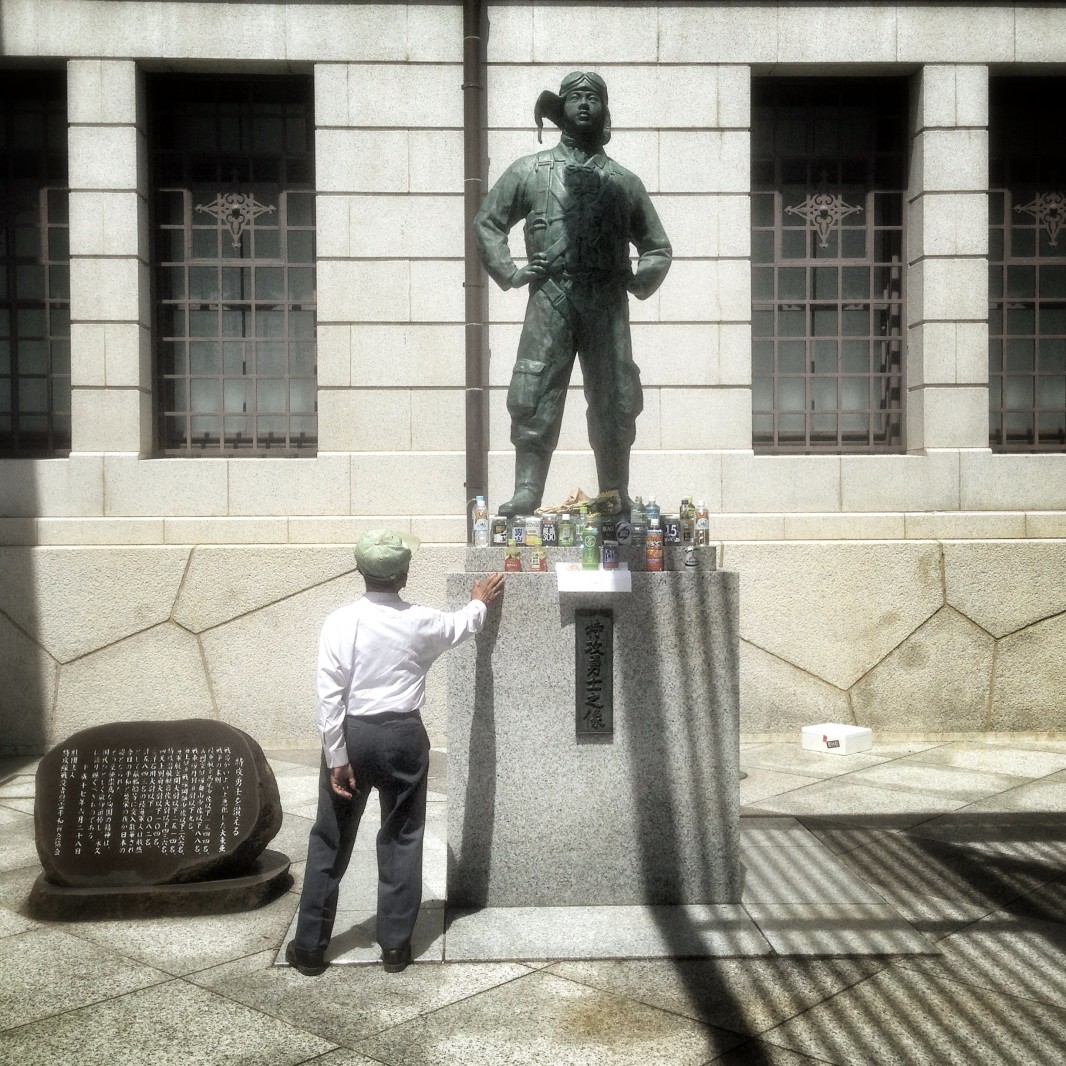
A Japanese War Veteran in front of a memorial to the 5000 Kamikaze pilots who sacrificed themselves during WW2
# Chernobyl, disaster, Fukushima, gender, kamikaze, nuclear accident, Thom Davies
0 3
Research diary outtake:
I went to an anti-nuclear protest in downtown Tokyo on Sunday. A few police were there to escort the protestors, occasionally stopping traffic and blowing their police whistles. It was an extremely controlled and polite affair. The police even told the protesters when and where to stop, which they promptly did.
It was a small protest by any standard, only twenty three people in total, the average age being somewhere in the mid-sixties. Holding anti-nuclear banners they chanted “No Nukes!” in English, and an elderly lady with a microphone made remonstrations about Fukushima through a megaphone.
I followed them as they slowly walked their way through the busy shopping district of Shibuya; moving at the pace of a funeral march – the police van ahead acting as their hearse. One protestor attempted to hand out flyers to the sea of shoppers who weaved past. Very often passers-by turned down the offer of a leaflet, politely bowing their head in rejection.
This small group of elderly protesters seemed so insignificant against the backdrop of Shibuya’s heaving intersection. The throng of faces waiting, texting, only occasionally glancing up – momentarily – at the comparatively unusual sight of a protest in Japan, before continuing on as they were.
In some ways it reminded me of a discussion I had last week at a ‘roundtable’ about Fukushima hosted by the the Foreign Correspondents Club of Japan. Several academics were there, as well as a Ukrainian diplomat and Japanese politician Tsuyoshi Shiina from the opposition ‘Unity Party‘ (結いの党).
The general consensus from the invited speakers was that the Fukushima accident has had relatively little impact on Japan’s political landscape. Much like how this small group of protesters was having little impact on the opinions of the thousands of uninterested onlookers.
What I took away from the roundtable about the political impact of Fukushima was both interesting and surprising. You can watch the whole discussion the video below.
At the time of writing we are almost three and a half years after the Fukushima nuclear disaster. A similar period of time after Chernobyl occurred in the ‘Ukraine Soviet Socialist Republic’ [Украинская Советская Социалистическая Республика] – the Soviet Union collapsed. Some academics such as Phillip Stone, Marjolein van der Veen, as well as myself, have attributed Chernobyl as a key factor leading to the sudden and unexpected implosion of the Soviet Empire. Chernobyl was, as one journalist reminded me at the Fukushima roundtable, the real start of Glasnost, of freedom of information. It showed for the first time the complete failure of the Soviet Union to protect its citizens.
In Japan there are no signs of such change. Given the far-reaching consequences of Chernobyl – might we expect more? In Japan there is no real questioning of the status-quo, at least at the national level, at least at the level of mainstream politics. The current government in fact, has never been stronger, with Prime Minster Shinzō Abe (安倍晋三) even able to pass a controversial law ending Japan’s constitutionally implied post-war pacifism.
Nuclear energy has not even become a totem around which opposition movements can pin their colours, as happened with Polish independence movements after Chernobyl. Instead we have the opposite – an entrenchment of political voices that means Japan’s energy landscape, which saw a reduction of nuclear power by 95% since 2010, will only be a brief hiatus in the onward march towards nuclear energy. The Fukushima-Daiichi accident is, then a mere bump in the road. In Japan the ‘nuclear village’ – as guest speaker Dr Christopher Hobson frames it – is as strong as ever, with the incumbent and opposition parties in Japan unable to offer any real alternative to nuclear power.
***
I guess one expects things that one looks at intensely to hold a stronger significance. We are perhaps all guilty of attributing greater significance to things we signify as important. Perhaps Chernobyl did not have that large an impact on the political landscape of the USSR, if Fukushima is anything to go by. Or perhaps the official political impact of disasters is the wrong measure, and skirts around the real impacts felt by the damaged and abandoned communities who always seem to preface nuclear disaster. Perhaps the undeniable social fallout – is where Chernobyl and Fukushima become uneasy bedfellows for comparison.
Chernobyl may not be the right lens through which to view all nuclear disasters, but its magnitude has fated each future meltdown to be compared – cheek by jowl. There is some truth in the cliché that ‘If you’re holding a hammer then everything starts to look like a nail‘. My hammer is four years of doctoral research about Chernobyl, so no surprise, then, that in my mind at least, Fukushima is the Chernobyl of the East. I’m hardly the first and won’t be the last to compare one with the other. It’s how we understand anything, through comparison, through metaphor.
The dissonance between the small group of elderly protestors marching slowly through Shibuya and the mass of passive onlookers glancing up with indifference reminded me of the political situation in Japan. It spoke to the disconnect between a disaster’s huge social impact, and its apparent limited impact on the political landscape.
***
Read more on Hobson’s research on the post-3/11 politics and nuclear power in his recent paper here.
Combined with the heady mix of jet lag and a few glasses of white wine, meeting the Emperor of Japan was one of the more surreal moments of my life. I felt even more out of place as I was in a T-shirt and shorts – though the shorts have been skilfully cropped out by the photographer (below)
I met the Emperor Akihito – known as the ‘heavenly sovereign’ (天皇) of Japan – at a wine reception near Tokyo on the first day of my JSPS funded fellowship. I’ve been awarded the scholarship to research the ongoing impacts of the 2011 Fukushima nuclear disaster in comparison with my existing ethnographic study in Chernobyl, Ukraine. Hosted by the University of Tokyo, I will be conducting fieldwork with communities affected by the disaster.
I spoke with the head of the Japanese Imperial family, and his wife Empress Michiko, explaining my research and talking briefly about my experience of Chernobyl. The Emperor wished me every success in Japan.
What the Emperor was like:
He’s s a small man, in stature and height – fragile with age but pretty active for an octogenarian. When I met him he was purposely shuffling with an entourage and smile. He asked me some questions and spoke through a translator at times, though I would guess this has more to do with slight deafness than not being fluent in English. We were told to speak loudly and slowly when addressing ‘His Imperial Majesty’.
We were later told that he was also accompanied by a 250 strong security team, but they made their presence fairly subtle – though frankly, a group of researchers probably posed quite a low risk threshold.
We were not supposed to take any photographs, which is a shame. I would have loved an ‘Imperial Selfie’.
# Chernobyl, Emperor Akihito, Emperor of Japan, Fukushima, JSPS, JSPS Summer Program
0 4
I am getting ready to travel to Japan this summer to research the ongoing impacts of the Fukushima nuclear accident. I have been awarded a JSPS Fellowship to do Chernobyl-Fukushima comparative research, based at the University of Tokyo.
I am really looking forward to seeing how the two disasters compare. For the last few years I have spent long periods in Ukraine interviewing and researching people affected by Chernobyl for a PhD in Human Geography. Having seen how marginalized communities cope with nuclear disaster in Ukraine, it will be interesting to see if similar opinions, views and struggles are playing out near Fukushima.
Business Cards
When I mention to people that I am going to Japan, one of the first pieces of advice people give is to make sure I have business cards. I’m told there is a tradition that surrounds business cards in Japan; certain ways of receiving and presenting cards. So I had some made. They arrived today, and I am hoping they will help me make connections when I am in Japan studying the Fukushima disaster.
I put four photographs from my War without War: Chernobyl photography project on the back.
I was near Chernobyl when Fukushima happened
March 2011: in a village near the main entrance to the Chernobyl ‘Exclusion Zone’ we had pulled-over to listen to the radio. I kept hearing the word “Yaponiya” (Japan) and “atomny” (atomic) from the crackly car stereo. The newsreader then started talking about Chernobyl: “Reports suggest that the nuclear meltdown in Japan could be like another Chernobyl…” I could not believe what I was hearing. Was this really happening? I got out of the car.
I had spent the previous week interviewing people who live in the contaminated landscape around the Chernobyl. My head (and voice-recorder) was full of their stories about life after Chernobyl, their daily struggles of life on the edge. My was body full of delicious Ukrainian food I had been given by kind old women and friendly villagers.
Standing by the car, in a village near Chernobyl – the radio crackling in the background – I had a very small sense of the confusion and unease that many people felt after disaster. What was the future for Japan? I thought. What was happening? Looking across a field past a few abandoned wooden houses, I could see the contaminated ‘Exclusion Zone’ beyond. Was this the future?
Human geography beyond the ‘Ivory Tower’:
With all-eyes on Ukraine at the moment, I have published an article in The Independent that highlights the struggle of those who live with the consequences of the nuclear disaster in Ukraine. This is based on my academic research in Chernobyl-affected regions of Ukraine.The article has been the lead piece on The Independent website all Sunday and is getting a lot of traffic on twitter/facebook etc. I am glad that my research is reaching a wider audience and that this important topic is being spoken about.You can access a copy of the piece on my academia.edu page, or the original article here.Photographic images are key to telling this story. My own photographs and those of my very talented friend Alexey Furman can be seen in the original article.
I did not chose the title of the article – that privilege lies with the editor – but the rest are my words and the words of those I met:
Ukraine’s other crisis: Living in the shadow of Chernobyl – where victims receive just 9p a month and are left to fend for themselves
The yellow and blue flag of Ukraine is an imaginary landscape. It supposedly symbolizes the endless fields and blue skies of a Ukrainian rural idyll.
Gazing north near the border with Chernobyl, one can be forgiven for being taken in by this fantasy; the yellow unploughed fields stretching out to the horizon. The illusion is broken however, by a distant strip of green conifer trees and disused pylons where the sky meets the earth. Beyond these trees lies the Exclusion Zone.
“We are like bugs on a potato” explains Viktor, standing on his field that backs on to the barbed wire fence of Chernobyl’s nuclear Exclusion Zone: “These bugs are not afraid of anything and nor are we, if you try to kill them – they are still alive, and we are the same”. Like many others who live on territory officially deemed contaminated by Chernobyl, he receives just 9p per month in compensation to ‘buy clean food’. “What can I do with this?” he asks, “It won’t even buy a loaf of bread”.
As the turmoil in Ukraine intensifies and the physical violence enacted upon Ukrainian citizens by bullet, truncheon or Molotov cocktail continues, another more stealthy form of violence continues to impact the lives of thousands of people – that of state-abandonment. This weekend marks the 28th anniversary of the world’s worst nuclear tragedy. With Ukraine’s economy on its knees and Russia at its throat, it is Chernobyl’s marginalized citizens who rely on dwindling compensation that are placed at the thin edge of this geopolitical crisis.
Earlier this month Russia announced an 80% increase in gas prices for Ukraine. Likewise, the IMF loan offered by the West in the wake of Crimea’s annexation has come with many strings attached, namely a long list of austerity measures that make the 2010 deal with Greece seem like a philanthropic gesture. Kiev’s floundering interim government are curtailing social services and slashing benefits whilst a depression on a scale not seen since the collapse of communism seems inevitable.
Ukrainians, one in four of whom are already below the poverty line, lie sandwiched between two geopolitical antipodes and are set to feel the full force of these austerity measures and gas hikes. Perhaps no group more so than the exposed victims of Chernobyl.
“This is war without war” explains Masha, who lives a few minutes walk from the forbidden spaces of the Zone – a cordoned off area of north-central Ukraine roughly the size of Oxfordshire. Like Viktor, she too receives virtually nothing in terms of compensation. Her tiny state pension – barely enough to make ends meet – is set to decrease further in the first round of President Yatsinyuk’s austerity measures. “We have a lot of diseases too” she adds “I can’t sleep now”.
But she, like many others, has other ways of coping. She grows her own food in the contaminated soil, “cucumbers, potatoes, you name it” and even illegally sneaks through holes cut in the fence around Chernobyl, deep into the radiated forests to gather mushrooms and berries. Some she pickles in jars for the uncertain year ahead, and others are sold on the streets of Kiev. The police sometimes catch her in the Zone but they are often more interested in eliciting bribes than arresting her.
Others collect scrap metal from the Zone in their bid to survive an absent state and failing economy. “If you can, then you steal something, if you cannot steal something – you are hungry” explains one man who regularly ventures into the forbidden forest. Selling the abandoned detritus and infrastructure of the Zone, left by the thousands of forced evacuees 28 years ago, has become an informal lifeline to many people who live in the shadows of Chernobyl.
People affected by the tragedy have been exposed twice – once to the invisible threat of radiation, and once more to a state that does not care. Liquidators for example, who risked their health in the wake of nuclear meltdown to clean up the contaminated landscape, today regularly struggle to claim the compensation they deserve.
“Do I have to die to prove I am a liquidator?” asks one woman from Kharkhiv, desperate for compensation to help buy medicines for illnesses she relates to Chernobyl. Their damaged biologies and psychological scars are testament to a state that has failed them.
Estimates of fatalities from the disaster vary wildly, from the IAEA’s figure of 4000 up to nearly one million. But any number hides the real human cost of the tragedy: the lives ruined, the dismembered communities, and the invisible poison of stress.
“You should see the cemeteries there” Viktor tells me, referring to the places where the 350,000 Chernobyl evacuees were sent, “they are like cities”.
There is a widely held belief that those who were forcibly evacuated have died from stress. As one evacuee tells me, who now lives 500 miles away from her childhood home in the Exclusion Zone: “We are like a tree that has been uprooted, and taken from our own land. There’s only a small chance that this tree will survive and grow in the new soil.”
Recent months have seen Lenin statues forcibly removed from Ukraine’s urban landscape, but the nuclear legacy of the Soviet Union is harder to erase. It is an inheritance that consumes around 5% of Ukraine’s budget each year, a cost that the post-IMF government will be targeting in its path towards austerity.
The dust will eventually settle on the ongoing unrest in Ukraine. Borders may even change. But long after the world turns away from Ukraine, people like Viktor and Masha will still be there, struggling on the edge of a forgotten tragedy – like bugs on a potato, attached to the soil.”
– Photographs by Alexey Furman and Thom Davies
# Chernobyl, Chernobyl photography, The Independent, Ukraine crisis, Ukraine's other crisis
0 0
